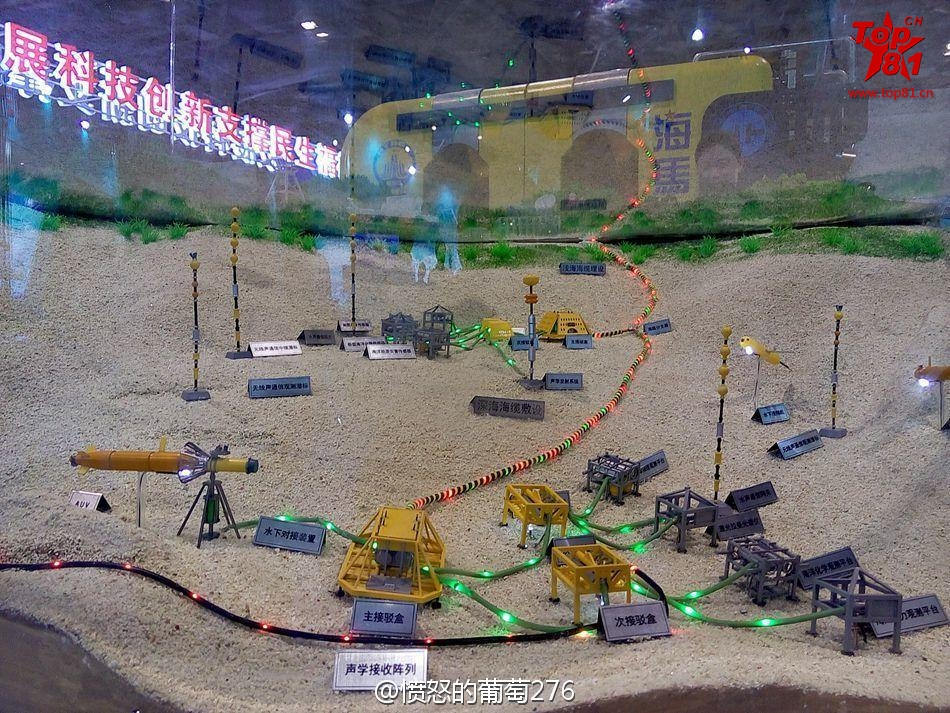

The Chinese Navy, the PLAN, appears to be following in the footsteps of its sister service, the People’s Liberation Army Air Force, in making growing investments in unmanned surface and underwater systems, aka “drones.” A new Chinese exhibit shows the scale of the potential future.

One area where unmanned underwater vehicles (UUV) and unmanned surface vehicles (USV) would make a splash is in Chinese anti-submarine warfare (ASW) efforts. ASW capabilities have been a longstanding weak spot for the PLAN, leaving it at a disadvantage to American and Japanese attack submarines. As a response, the China State Shipbuilding Corporation (CSSC), which builds virtually all PLAN warships, has proposed an “Underwater Great Wall” of sensors, positioned on the seabed floor, to listen for enemy submarines. (The US had a similar system on the Atlantic Ocean floor to listen for Soviet submarines.) Such underwater listening posts may already have been installed near the giant PLAN base at Sanya, Hainan Island in the South China Sea. On a more optimistic note, CSSC suggested that an Underwater Great Wall would be useful for warning against natural disasters like tsunami, and could be used to collect research data on marine life and geology.

In addition to active and passive sensors located up to 3,000 meters underwater, the Underwater Great Wall will be supported by a wide range of USVs. Chinese researchers intend that these autonomous USVs will be able to work in conjunction with the seabed sensor picket line, and autonomously locate and track enemy submarines.

For example, one USV is the torpedo shaped Semi-Autonomous Robotic Vehicle (SARV). It has ports on its front for sensor installation, and a dorsal (top) side detachable sensor pod (possibly passive sonar). It can be launched out of a submarine’s torpedo tube, enabling it to act as a force multiplier for Chinese submarines, in addition to its underwater great wall duties.

Another type of USV are dual bodied USVs. The main propulsion hull has another, smaller hull attached to its top, which can carry a wide range of sensitive ASW equipment (the smaller hull can even come with its own sensor pods). Additionally, there are more conventional underwater gliders which manipulate their buoyancy and wings in order to glide between seawater layers of different temperature and densities.

The 5-10 ton Autonomous Robotic Vehicle (ARV), which is similar to USN’s LDUUV in size and shape, is intended for long endurance missions and hauling larger payloads than your average torpedo-like UUV. The ARV can be deployed submarines and surface ships, and likely has a modular payload capacity for surveillance, intelligence collection, mine countermeasure and anti-submarine warfare missions.

To fully unlock the potential of UUVs, Chinese scientists will have to master autonomous intelligence for these underwater robots, not just individually but also to teach them to ‘swarm’, in working together with one another with little or no human oversight, as well as with other naval platforms. Other technologies would include new forms of underwater communication and datalink technologies, as well as precise navigation systems and multiple sensor payloads.
You may also be interested in:
For Sale: The Next Generation of Chinese War Robots
Not a Shark, But a Robot: Chinese University Tests Long-Range Unmanned Mini Sub
